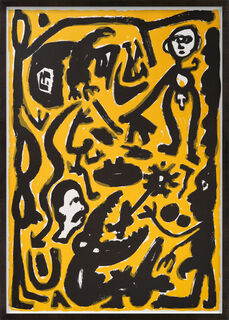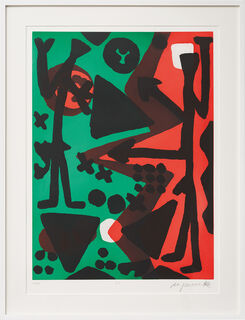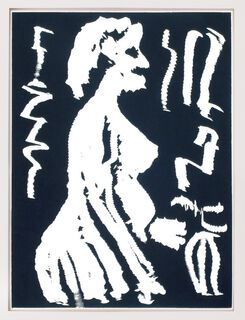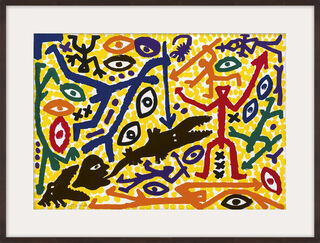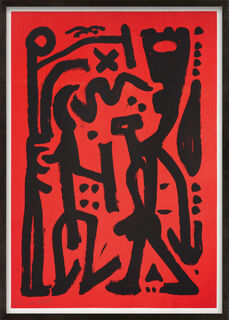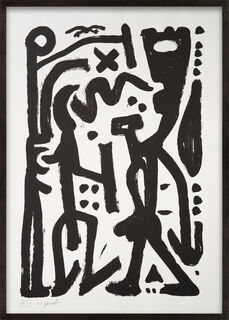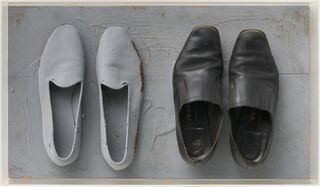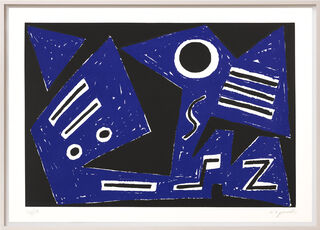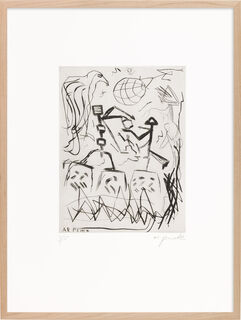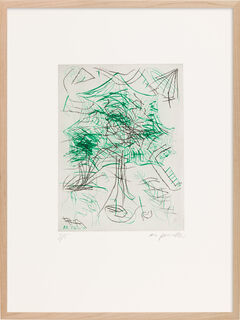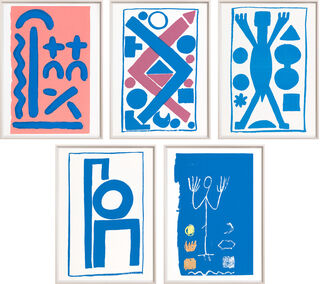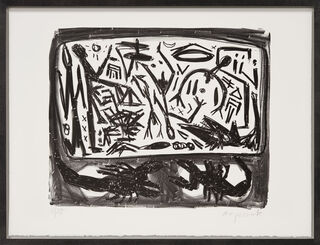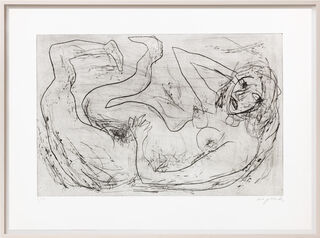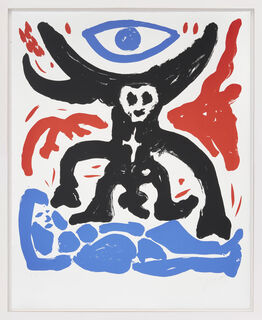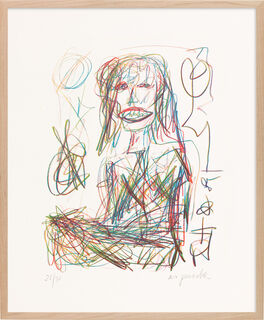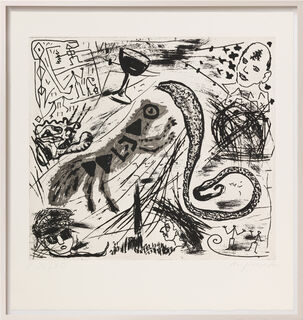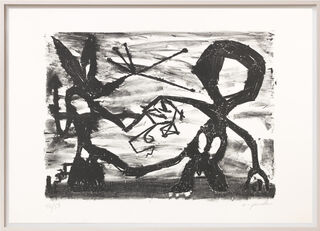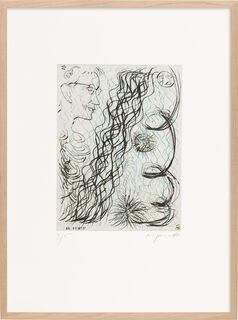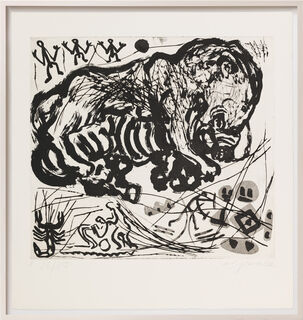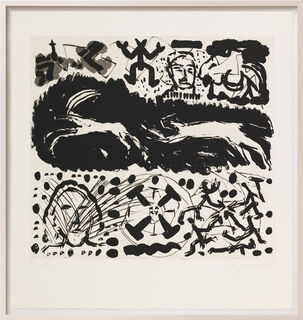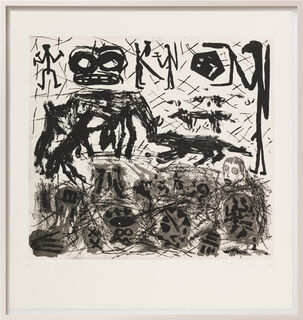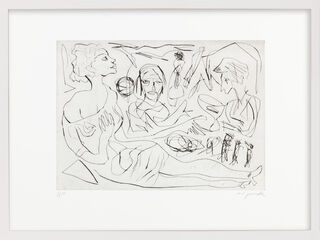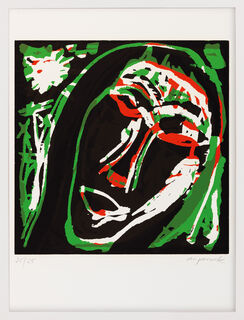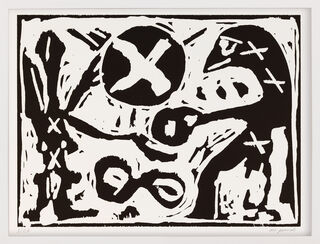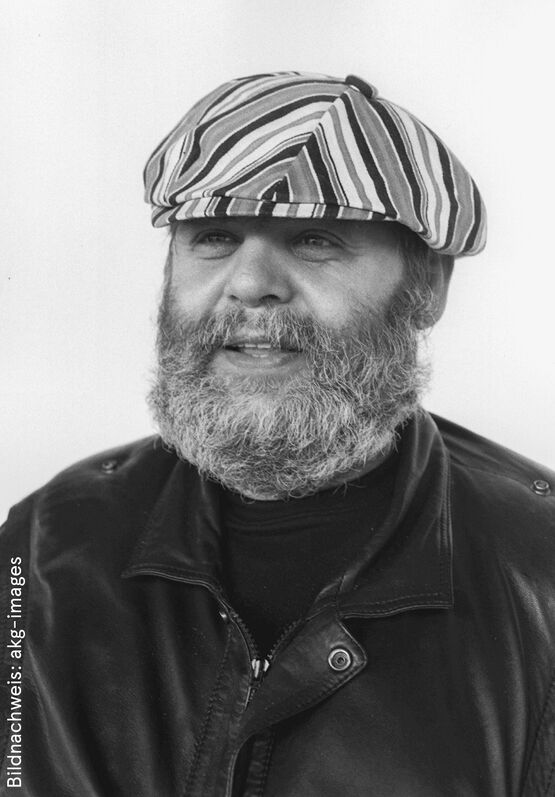
A. R. Penck
1939-2017
A. R. Penck was one of the most renowned contemporary artists. His paintings are part of important collections of the Museum of Modern Art in New York, the Stedelijk Museum in Amsterdam and the Hamburger Kunsthalle.
He was a drummer in a jazz band and wrote and produced films. However, he is renowned for his "elemental sign figures", which are always reminiscent of cave drawings.
The world of his paintings is populated by animal protagonists and mythical creatures that are formally positioned between figuration and abstraction. Minimalist forms and stick figures repeatedly give rise to compositions of memorable translucence, influenced by prehistoric cave painting and graffiti art.
Art historian Jürgen Schweinebraden says about A. R. Penck: "The world of his paintings is populated by magical elements, animal symbols, mythical creatures with evocative gestures. Rationalism and irrationalism show in fascinating variation, often allegorically encoded, the power and powerlessness of humans in the world they have created."
His Prints, which are rarely shown in exhibitions, are of particular importance in the artist's oeuvre. For his extensive print work, Penck formulated, re-examined and varied pictorial ideas from previously developed paintings.
Penck was born as Ralf Winkler on 5 October 1939 in Dresden. His artistic activity in East Germany, which he left for good in 1980, led him to repeatedly adopt pseudonyms: 1973 Mike Hammer; 1974-76 TM; 1976 Y.
After taking several painting and drawing lessons in 1953-56 in Dresden, he applied unsuccessfully to art colleges. He then managed to get by with evening classes at the Dresden college and some occasional work. His first realistic pictures were still strongly influenced by the style of Rembrandt and the early Picasso. It was not until 1961 that he turned away from the realistic painting style. He created the so-called system pictures, which are with symbolic abbreviations reduced representations of people. They are supposed to depict basic interpersonal relationships.
This was followed by a period of study of cybernetics and information theory. As a continuation of this, he created the concept "Standarte" from 1968 to 1974. Afterwards, he created his first expressive sculptures made of felt or wood.
His friendship with Jörg Immendorff is reflected in an intensive collaboration from 1976. The following year Penck began creating his first etchings. Silkscreen portfolios and self-designed books were produced. The move to Cologne in 1980 initiated the series "Standarte-West". In 1983, A.R. Penck moved to London and in 1985, he received the Aachen Art Prize. In 1988, he was appointed professor of painting at the Academy of Arts in Düsseldorf. Since his retirement in 2003, the artist lived and worked in Dublin, Ireland. A.R. Penck passed away in 2017.


